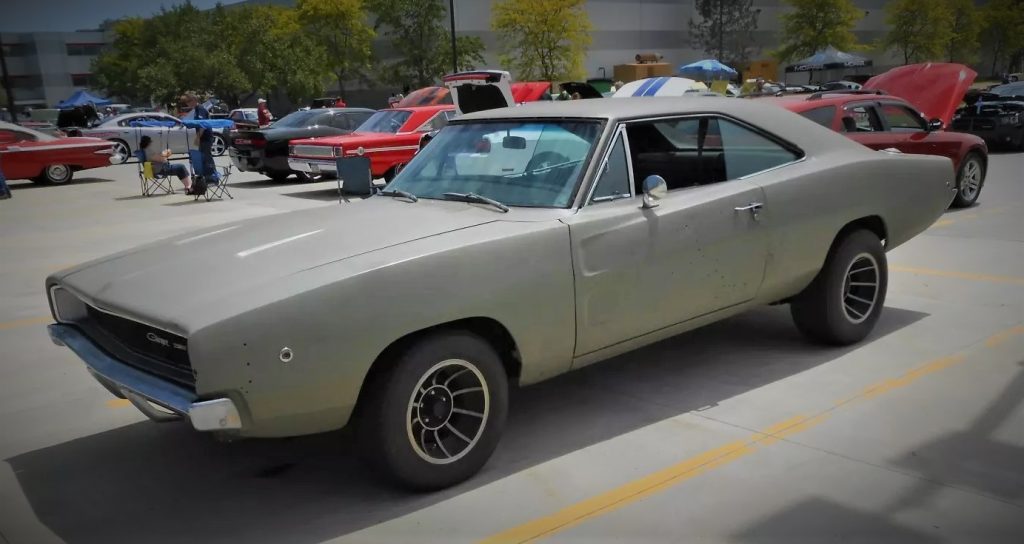You’ve got questions. We’ve got answers—the Summit Racing tech department tackles your automotive-related conundrums. This week, we’re helping a reader troubleshoot a misfiring Mopar 440 in a 1968 Dodge Charger.
Q: I have a 1968 Dodge Charger that is giving me fits.
It has a 440 high performance engine that is basically stock except for stainless valves, a Weiand Action Plus intake manifold, a Holley Model 4160 vacuum secondary carburetor, and a Mopar Performance “Orange Box” electronic ignition. The transmission is a 727 automatic, and I am running a 3.23 ratio gear in the rear axle. The drivetrain has approximately 2,500 miles on it.
The car runs great under normal acceleration and when I kick it into passing gear—no pinging, flat sports, etc. When I apply medium throttle, I tend to get a miss. There are no flat spots or any pinging, just the occasional miss.
I have experimented with Champion and NGK spark plugs and various plug gaps. I have switched between the Mopar Performance ignition and an MSD 6A ignition. I have changed carburetor jetting and secondary springs, and have experimented with the vacuum advance adjustment on the distributor. I even called Mopar Performance, and the tech guy told me to disconnect and plug the vacuum line at the carburetor. None of these things have helped, and I’m at a loss as to what to try next.
Any suggestions?

A: Judging by everything you have told us, we would say your miss is occurring at the highest torque load at which the Charger’s drivetrain operates. Given all of the changes you’ve made to the ignition system, we don’t think the miss is ignition-related. You might want to double check the ignition wires for cylinders five and seven and make sure they are not routed too close to each other. If they are, they might be crossfiring, which can cause a miss.
But we think the miss is probably fuel-related.
We’re assuming that you rebuilt your 440 to stock specifications, including compression ratio, which would be around 10:1. With that much compression, the 440 might not run properly on 92-93 octane pump gas that is currently available. Under high torque loads, it could develop a lean miss like the one you are experiencing.
To verify this, add a bottle of octane boost to your next tank of gas, or mix the pump gas with higher-octane racing fuel if it’s available. Reset the float level on the carburetor and go for a long drive and see if the miss goes away. We have a feeling it will.

What? Adding Octane booster will do nothing to correct an air/fuel ratio problem… He said there’s no audible ping – and that’s the only thing Octane booster will fix. Do yourself a favor – invest in a cheap wide band O2 sensor – and mount the sensor in an exhaust bung maybe 18 inches downstream of the manifold (or header collector). Use that to tune the part-throttle circuits in your carb – I would say the AF ratio should stay in the 12:1 to 12.5:1 range during medium throttle. I would also make sure that you have enough initial timing advance in the dizzy. You are gonna lose all vacuum advance during medium/heavy throttle – so all advance needs to come from initial and mechanical advance. Oh yeah – make sure your mechanical advance is actually working. Rev it up to 3200 or so – you should see the timing advance as you rev it (using a timing light)
Thank you for your input, Jimmy. We welcome your thoughts/ideas here, especially on the Mailbag posts. Always great reader feedback!
Before he spends any money, he can raise the float level a small but noticeable amount and this will tend to richen the fuel mixture. Then drive the car again and notice if the miss is better or worse. If it is better or even gone, then he can probably assume that he does indeed need to follow Jimmy’s advice. The carb is running lean.
I also have a 440 with similar experience. THANKS for the advice. Sometimes we need another way of thinking.